I was invited to try out a new technology that works to analyse your padel game. To do so, I participated in an exhibition match at Chiswick Rocks Lane. Here’s my take on the tech at this stage of development.
The (padel) learning mindset
Before talking about the tech, though, it’s key to approach this type of analysis with the right mindset. I can admit that it’s hard sometimes to accept the facts (and my weaknesses)! However, of course, it’s not with the data alone that I’ll improve. It’s what I do with it that counts!
The vast majority of people coming to padel tennis have typically played another racquet sport before (e.g., lawn tennis, squash, rackets…). The challenge is figuring out how to bring your hand-eye coordination, pick a few useful skills and shots that transfer and then onboarding the padel-specific strokes, tactics and mindset that are new (and different from the other sports). Of course, that’s the real challenge and joy of padel! An area that often befuddles me (and I’m guessing others) is that, despite having practiced a shot to death with a coach, I end up not being able to execute it in a match. Another typical problem (in many sports, I dare say) is that I will misjudge my own standard of play. Most of the time that means that I think I play better than I really do. It also can mean that I have the wrong impression of which shots I make or miss most often. Fundamentally, it’s about adopting a genuine learning mindset that opens you up to a desire to change the way you play. Filming yourself is a good way to start, but what does the film tell you (other than I look much older than I feel)? That was why I was very excited to get a chance to try out a new analytical technology for padel: Skylab!
What is Skylab?
To quote their own site, the Manchester-based Skylab is “a strategic digital partner that applies its passion, experience and expertise in sport and technology to make a positive difference for clients, athletes and fans alike.” Part of the VC Inc&Co., Skylab has linked up with Dartfish, a Swiss-based company that develops software for motion and game analysis to improve sport performance, to develop a software to record and analyse padel tennis. Skylab has done this type of work for some 14 other sports (lawn tennis, rowing, football, cycling, cricket…). They are currently honing their padel tech. And the best way to explain what they do is to show how they evaluated a demonstration game I played alongside my valiant partner, Barnes Benson (a leftie) against cofounder and owner of the Chiswick Rocks Lane club, Drew Warren and coach Jean-Marc Lenoir. Outside that we had a hotly contested and fun game, here are some of the highlight analytics that Skylab produced for us (and for me in particular). After showing you the data, I will break down what I think and how I might be able to use this material.
Analysis of a padel match
Here’s the overall summary:
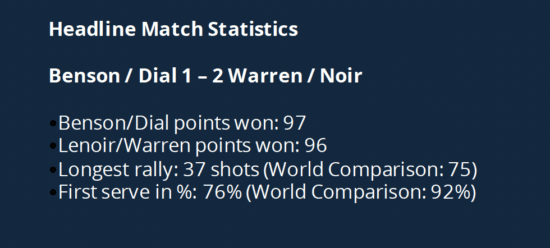
What pops out for you? We lost the match, but won more points? For me, the first item to notice is that our longest rally is exactly half the longest in the FIP World Championship 2022. Overall, in terms of the average length of our rallies, it was seven as compared to 12 for the pros. Secondly, our first serve percentage is way below the pros. Two thoughts come to mind:
- play to keep the ball in play more (longer points)
- practice my first services (have you ever noticed how little we practice services before starting a game?)
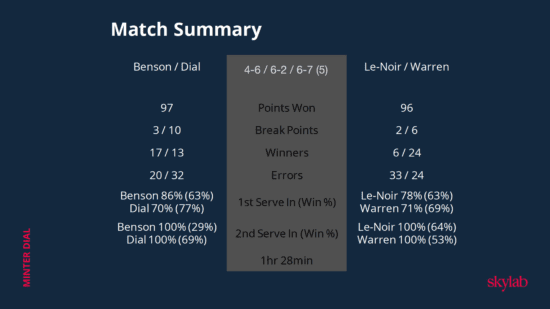
In this summary slide, we can see that Barnes and I had more breakpoint occasions, but were a little less good (30% vs 33%) at taking advantage of them. Basically, one more break made would have made the difference too! We can also observe that Barnes hit more winners (bravo) and made less errors (even more bravo!). As my cousin and professional padel player, Nallé, has drilled into me, it’s more important to be unhappy with your unforced errors than happy with your winners.
Watch your serve percentages!
In the good news category, no one made a sinful double fault. However, something I’d never cottoned onto in my game was my first serve percentage, which in this game was 70%, well below Barnes’ 86% and even farther below the pro average of 92%.
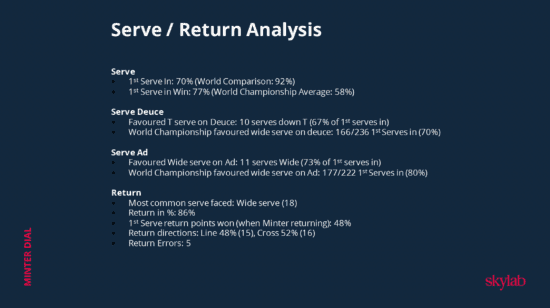
That said, I was quite satisfied with my service winning percentages (at least compared to the other three). Is it better to aim for a difficult first serve and have a ploddy second serve? Is there any effect on the returner’s mindset when having to face a threatening first service? When I look at the lower win rate on first serves, I’m left to believe that it’s a question of better-quality returners rather than good servers… If you’re planning to play at a higher level, I think it’s safe to say that the serve itself can’t be too big a factor. It’s more about owning the net. The direction of the serve (down the T or wide), especially on the deuce court, will surely depend on how many lefties one must face…
While I’m only showing the topline numbers here as per Skylab, their dashboard allows for interactive questioning, (i.e., touch, pinch and scroll), and allows you to plunge into all sorts of different data. For example, you can check out how often you lob, hit a groundstroke, volley or ‘smash.’ Of course, if I had to nit-pick, I’d prefer the “smash” to be divided into more appropriate categories vibora/bandeja, rullo, gancho and overhead smash. After all, each of these has very different effects and purposes.
Location analysis
Skylab tech tracks the bounces of the balls, including the first bounce, where contact is made, and the last bounce. What the results show is that my winners systematically bounced before the service line. Presumably that meant that the second bounce was likely to be at or near the back wall, which caused the opposition trouble. The second realisation is that all but one of my winners came when I was over the service line. But, as Nallé will tell you, I ought to be more focused on my errors. Especially in my rather error-prone outing here.
In terms of the errors I made (forced and unforced), the system showed that 13 went into the net, 5 went into the side wall, and 7 went into the back wall. (Note: that adds up to 25 of the 33 I made). In any event, my takeaway: I must have a higher margin of error over the net.
Length of rally
As mentioned above the average length of rally was 7.3 during this exhibition match versus 12.2 for the pros (at the FIP World Championships in 2022). As the sets went on, the average slipped from a high of 7.9 down to 6.9, indicating possible fatigue? Interestingly, in their first set, the pros also had the highest average, perhaps as they test each other out, figure out the court and get into the groove? I note that the median number for us was 5 shots. Cue the ball 3 stats.
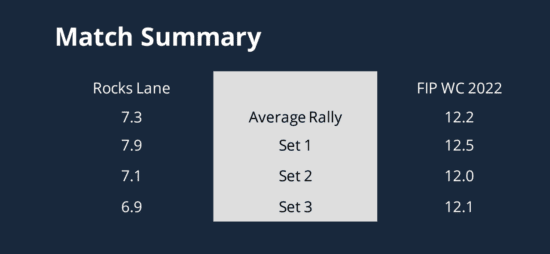
Ball 3
Other than the serve, serve return and last shot, Skylab also analyses what happens with the third shot of a rally. It’s an essential shot. What struck me about our match was that Barnes and I had a good attacking rate on the 3rd ball (i.e., dealing with the opponents’ returns). The variation of returns to the server or my partner mirrored what happens at FIP. The big difference is that we were put on the defensive 31% of the time versus just 16% for FIP. I translate this as being beaten by a lob or groundstroke and losing the net. This would be something else that we’d need to work on, if Barnes and I were to take our partnership seriously!
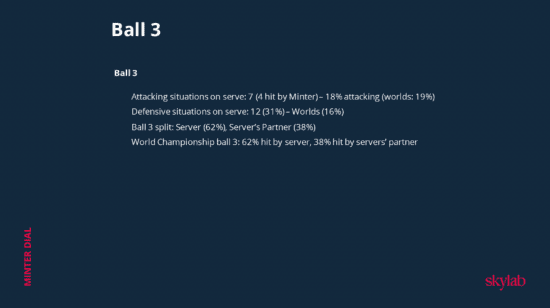
You can find here the full PDF that Skylab sent me.
My conclusions so far…
Notwithstanding the fact that the biggest source of progress happens by practicing shots, not just playing matches, the Skylab data brought several new pieces of information to my attention. Here’s what I need to work on:
- Above all else, I must reduce my errors! Specifically, I need to give myself a higher margin of error over the net for my groundstrokes.
- I should look to get a higher first-serve percentage.
- I need to work on ways not to lose the net as frequently on ball 3 when serving. Maybe this will mean serving slower in order to get to the net faster? On the deuce serve, it seems I serve more frequently than the pros down the middle. Typically, I do that only when I am playing left to cut down the angles.
- I made 5 serve returns errors: more direct faults! Another opportunity to improve.
What do you take away from this data? How interested would you be to have such an analysis of your match?
For good measure, here is a filmed selection of my “winners,” as captured by Skylab. I must say that it was quite entertaining to have a drone film us and, as you can see by the off-court post-match session around the TV monitor, we had endless questions (and suggestions) which the team patiently dealt with.
Things for development of the Skylab tech in the future:
- It will be vital to find a way to classify unforced versus forced errors. For now, such a differentiation is not available in the system, at least not automatically. The definition of an unforced error will need to be established with the team hiring/using the Skylab tech. I note that Skylab provided me with a glossary of terms that is designed to identify each type of shot.
- I think that the penultimate ball is an important indicator relative to what happens on the last ball. Of course, we should be considering a point as a build, not just the last two shots, but at the very least, the penultimate shot will have a lot to do with the outcome of the final shot.
- Another set of data that would be interesting to tag would be where each players’ shots were aimed. In other words, how many were down the side (let’s say a corridor of the last 15%), how many at the players at the net, and how many were down the middle. Equally, it would be interesting to breakdown our shot choices. How many times we hit a drive groundstroke, a lob, a chiquita (a dink over the net while the opponents are at the net), or an overhead (not just on the last shot, but overall)
- I’d love to be able to synchronise my health data on my Apple Watch, in order to match with the game video.
- Finally, if I had a magic wand, I’d also ask the system to be able to evaluate each player’s level so that we finish with our inflated sense of selves. For example, I have to believe that the system could eventually evaluate shot variety and effectiveness.
The question is: how much would you be willing to pay to have such an analysis of each game? How patient will you be to see the results? How much time will you spend in analysis? How will you take on the lessons learned from your observations?
Terms of Service
Privacy Policy
Contact
Podcast
Books
Home
©Minter Dial 2023

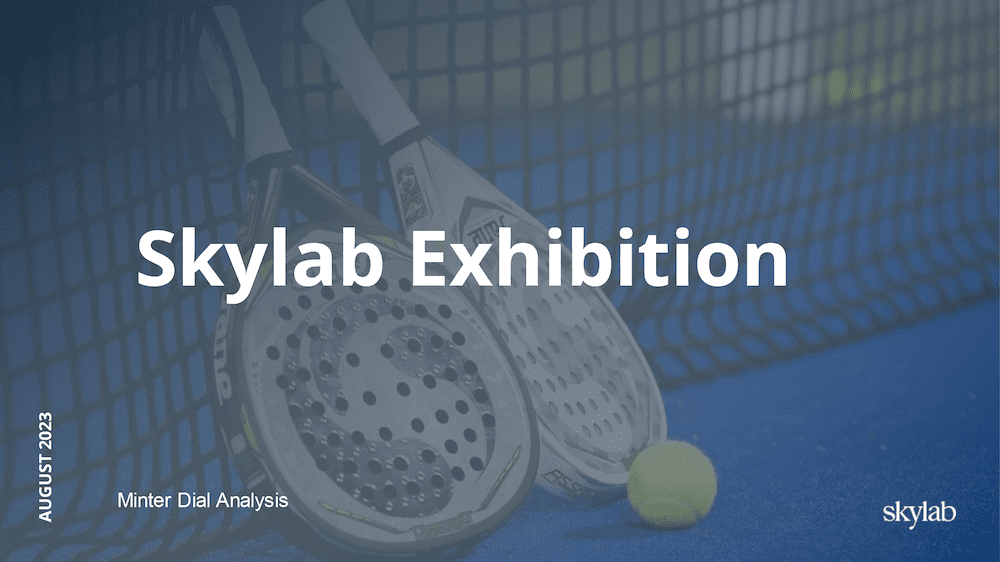
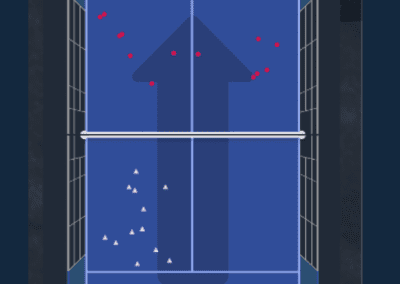
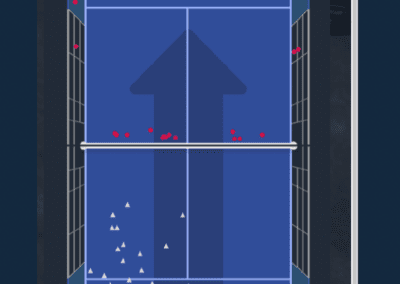
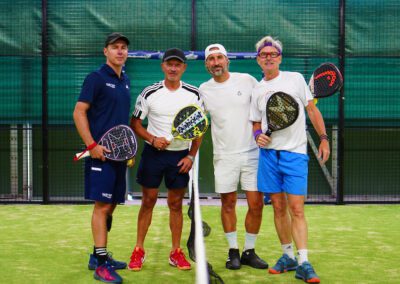
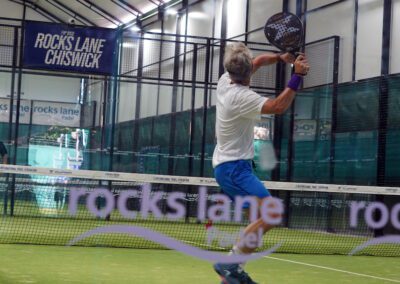
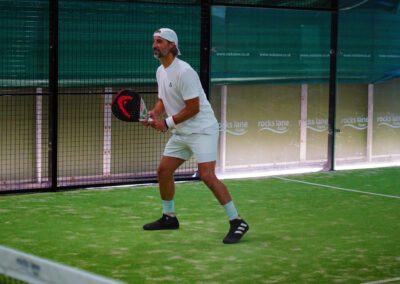
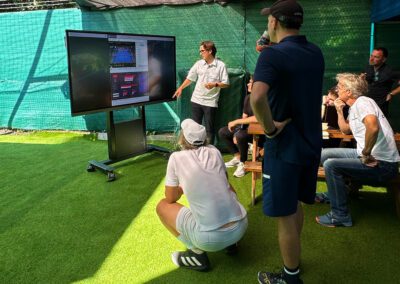
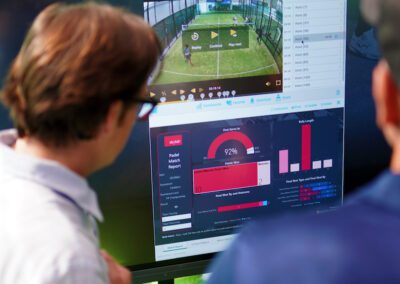
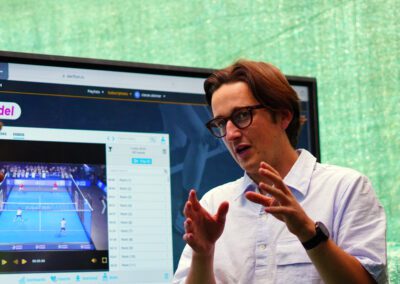










“despite having practiced a shot to death with a coach, I end up not being able to execute it in a match”.
This is so true, I wish I could have a coach watching my games. My shots under pressure are often very different from those in training. I’m guessing that with this technology I’ll be able to analyse the videos with my coach.
We’ll see how it goes, Alex! Tomorrow we’ll get a chance to try it out!